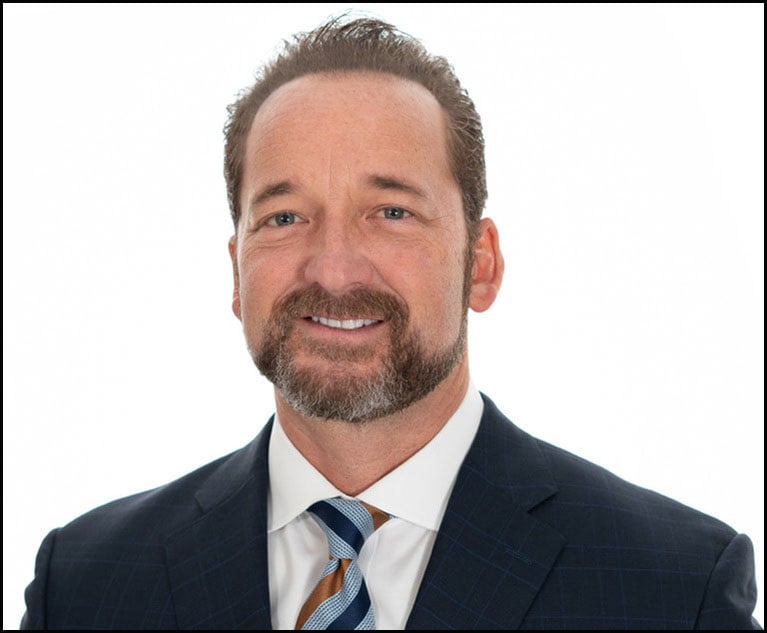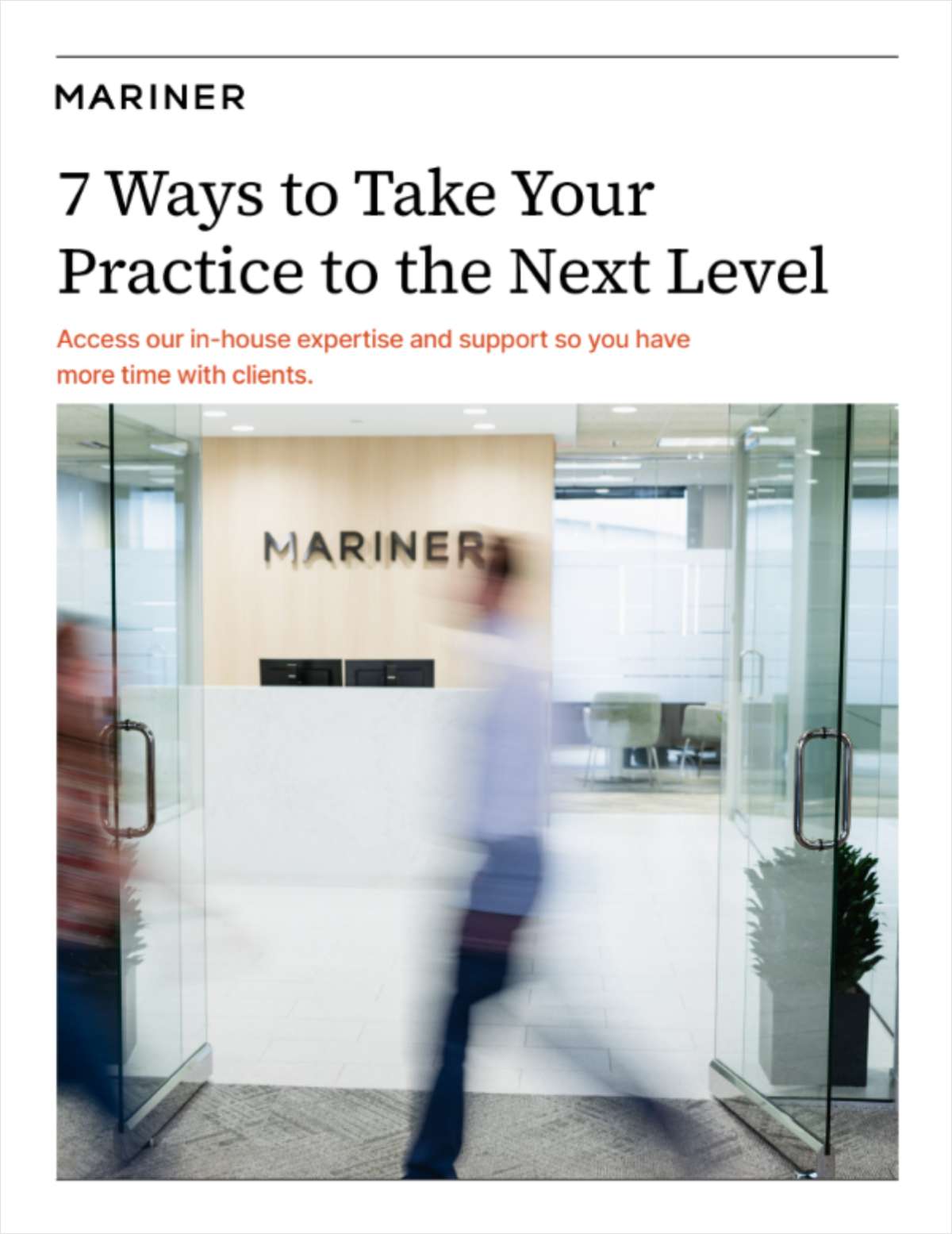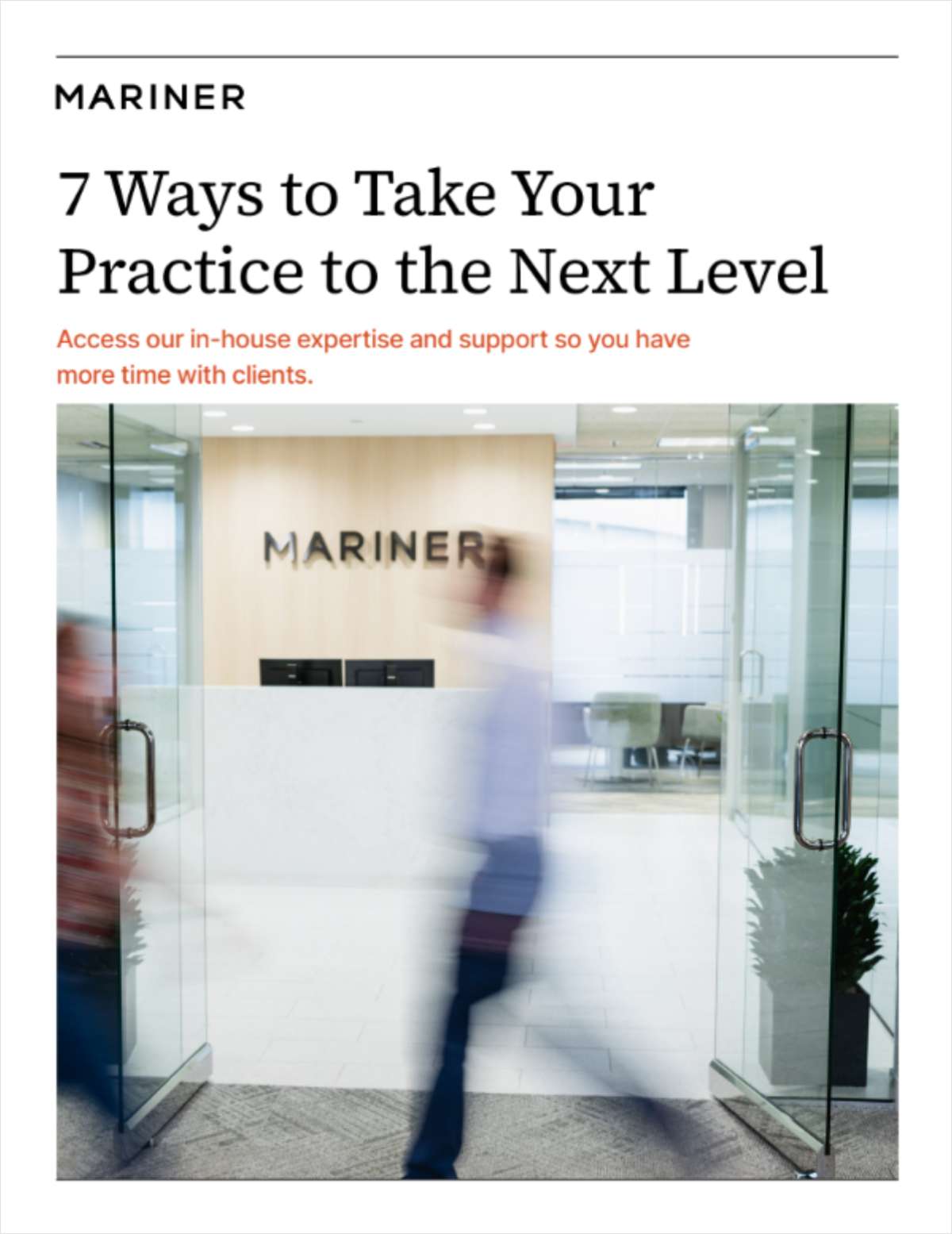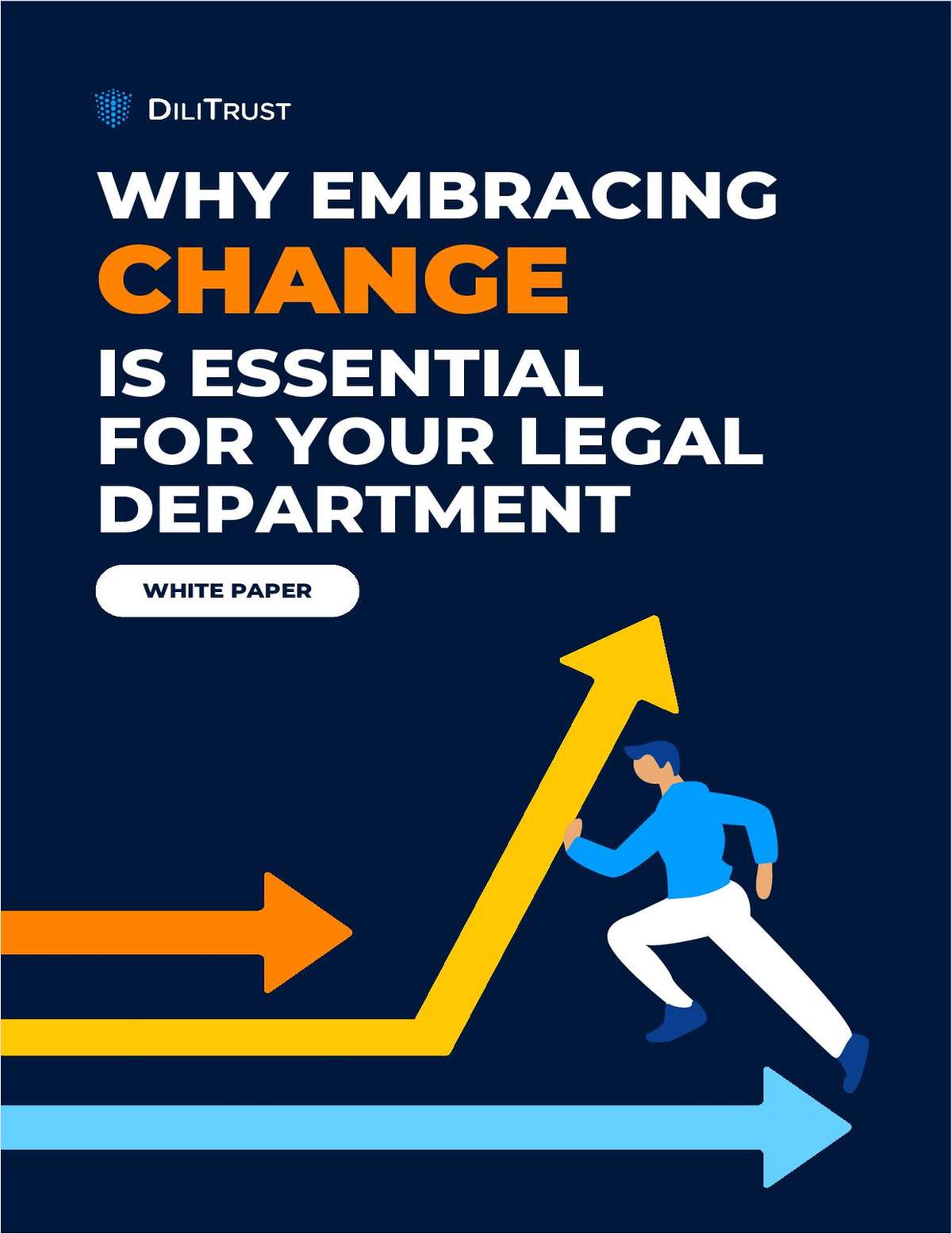Arguing, Again, for Statewide Office of Dispute Resolution
Perhaps some thought leader from the executive, legislative or judicial branch will see the great potential of such an office and put the wheels in motion.
November 22, 2017 at 10:20 AM
11 minute read

I have previously written about and argued for the creation of a statewide office of dispute resolution to address public and private disputes impacting large segments of Connecticut's population. A number of states have established such offices, often within their judicial departments, with considerable success.
Major public disputes having great impact on the citizens of this state have become commonplace—whether they've been disputes about highway construction, appropriate use of water resources, environmental matters or membership in a regional waste disposal processing district, just to mention a few.
Many of these disputes involve critical public-policy issues that affect hundreds of thousands of lives. Some disputes originate between private parties but enter the realm of quasi-public disputes because of their broader implications.
One type of recurring dispute involves standoffs between hospitals and insurers over payment rates. A recently resolved dispute between Hartford HealthCare and Anthem Blue Cross Blue Shield is but the latest example. (Disclosure: While I have past and present connections with Hartford HealthCare, including being a corporator and emeritus board member of a hospital within the HHC orbit, I am not privy to the specifics of the disagreement between the parties; nor am I aware of the details of positions advanced or rejected. The suggestions I make below are mine, based on a longtime involvement in the field of dispute resolution, including some experience in such disputes. My comments should not be attributed to or considered to be endorsed by any other entity.)
Through the years Connecticut has witnessed a number of these hospital/insurer clashes involving a number of players. One could confidently argue that with the rapidly changing landscape of health care reimbursement models and new paradigms in how value should be measured, incentives created and performance rewarded, we are likely to see more. These constitute just one example of public disputes in which the state has a great interest.
Over the past 50 years since the inception of what is often referred to as the alternative dispute resolution (ADR) revolution, we have witnessed great strides in how private disputes are addressed and resolved through a spectrum of creative, party-controlled processes, both within and without the courts.
Regrettably, we have not been as successful in addressing a wide variety of public disputes or quasi-private disputes with major implications for broad segments of the community. Presumably, such public-oriented disputes have been based on good-faith positions held by the competing sides, each convinced that its position has the most merit. Unfortunately, many of them have ended up as public slugfests.
After the eruption of the dispute, many well-intentioned private parties and public officials have tried to cajole the parties into facilitated resolutions, with varying results.
What has been missing has been a dispute resolution system and process already in place and overseen by the state before the dispute erupts—one that can be guided by impartial third parties skilled in both the subject matter of the dispute and ADR processes to address the dispute.
Surely, parties have the right—if not the obligation—to disagree and to advance positions which they are confident are meritorious. But they also have an obligation to consider the impact on stakeholders who may not be party to the dispute but could be critically affected by its rampage.
So far there is no public entity broadly charged with the responsibility to intervene in these public or quasi-public disputes and to guide the disputing parties toward a process for a mutually acceptable resolution without depriving them of their right to maintain firmly held positions. Of course, we have individual regulatory agencies exercising jurisdiction over a wide body of entities. But we do not have an office with broad oversight and expertise in the field of dispute resolution.
The objective is not to force a resolution, except in the most urgent situation, but rather to align the dispute with the appropriate process, provide the disputants advice, direction and resources and, most importantly, to do it early in the dispute.
A state office of dispute resolution would not be limited to proactively intervening in existing public disputes. There are many additional functions and benefits to the concept, including:
- Coordinating diverse, sometimes, disjointed ADR initiatives by various entities.
- Serving as a clearinghouse for ADR information, activities, training and research.
- Bridging the gap between judicial and private ADR efforts.
- Creating greater public awareness of ADR benefits and encouraging greater ADR use.
Some would argue that the last thing we need in the midst of our state's economic and budget reductions of most state departments, including the judicial branch, is the creation of another state agency. But that fails to recognize that an office of dispute resolution would yield countless benefits and help avoid destructive breakdowns of relations between organizations, as well as possible threats to citizen safety.
While public disputes will always be a way of life, mediation and a broad spectrum of other alternative processes, if articulated as a favored state policy by the creation of an office of dispute resolution, would allow all involved to spend less time name-calling and sweeping up yesterday's broken glass and more time on the all-important task of productively solving tomorrow's challenges.
This is all the more important as many of our state's previously existing community mediation resources have been sidelined from teaching, training and advocating for facilitated deliberations due to severe budget cutbacks.
Legislative proposals are already being considered for how to better address some of these public disputes. An office of dispute resolution should be high on the list.
Perhaps some thought leader from the executive, legislative or judicial branch will see the great potential of such an office and put the wheels in motion. This is the time to do so. It could be a wonderful holiday gift for Connecticut.

I have previously written about and argued for the creation of a statewide office of dispute resolution to address public and private disputes impacting large segments of Connecticut's population. A number of states have established such offices, often within their judicial departments, with considerable success.
Major public disputes having great impact on the citizens of this state have become commonplace—whether they've been disputes about highway construction, appropriate use of water resources, environmental matters or membership in a regional waste disposal processing district, just to mention a few.
Many of these disputes involve critical public-policy issues that affect hundreds of thousands of lives. Some disputes originate between private parties but enter the realm of quasi-public disputes because of their broader implications.
One type of recurring dispute involves standoffs between hospitals and insurers over payment rates. A recently resolved dispute between Hartford HealthCare and Anthem Blue Cross Blue Shield is but the latest example. (Disclosure: While I have past and present connections with Hartford HealthCare, including being a corporator and emeritus board member of a hospital within the HHC orbit, I am not privy to the specifics of the disagreement between the parties; nor am I aware of the details of positions advanced or rejected. The suggestions I make below are mine, based on a longtime involvement in the field of dispute resolution, including some experience in such disputes. My comments should not be attributed to or considered to be endorsed by any other entity.)
Through the years Connecticut has witnessed a number of these hospital/insurer clashes involving a number of players. One could confidently argue that with the rapidly changing landscape of health care reimbursement models and new paradigms in how value should be measured, incentives created and performance rewarded, we are likely to see more. These constitute just one example of public disputes in which the state has a great interest.
Over the past 50 years since the inception of what is often referred to as the alternative dispute resolution (ADR) revolution, we have witnessed great strides in how private disputes are addressed and resolved through a spectrum of creative, party-controlled processes, both within and without the courts.
Regrettably, we have not been as successful in addressing a wide variety of public disputes or quasi-private disputes with major implications for broad segments of the community. Presumably, such public-oriented disputes have been based on good-faith positions held by the competing sides, each convinced that its position has the most merit. Unfortunately, many of them have ended up as public slugfests.
After the eruption of the dispute, many well-intentioned private parties and public officials have tried to cajole the parties into facilitated resolutions, with varying results.
What has been missing has been a dispute resolution system and process already in place and overseen by the state before the dispute erupts—one that can be guided by impartial third parties skilled in both the subject matter of the dispute and ADR processes to address the dispute.
Surely, parties have the right—if not the obligation—to disagree and to advance positions which they are confident are meritorious. But they also have an obligation to consider the impact on stakeholders who may not be party to the dispute but could be critically affected by its rampage.
So far there is no public entity broadly charged with the responsibility to intervene in these public or quasi-public disputes and to guide the disputing parties toward a process for a mutually acceptable resolution without depriving them of their right to maintain firmly held positions. Of course, we have individual regulatory agencies exercising jurisdiction over a wide body of entities. But we do not have an office with broad oversight and expertise in the field of dispute resolution.
The objective is not to force a resolution, except in the most urgent situation, but rather to align the dispute with the appropriate process, provide the disputants advice, direction and resources and, most importantly, to do it early in the dispute.
A state office of dispute resolution would not be limited to proactively intervening in existing public disputes. There are many additional functions and benefits to the concept, including:
- Coordinating diverse, sometimes, disjointed ADR initiatives by various entities.
- Serving as a clearinghouse for ADR information, activities, training and research.
- Bridging the gap between judicial and private ADR efforts.
- Creating greater public awareness of ADR benefits and encouraging greater ADR use.
Some would argue that the last thing we need in the midst of our state's economic and budget reductions of most state departments, including the judicial branch, is the creation of another state agency. But that fails to recognize that an office of dispute resolution would yield countless benefits and help avoid destructive breakdowns of relations between organizations, as well as possible threats to citizen safety.
While public disputes will always be a way of life, mediation and a broad spectrum of other alternative processes, if articulated as a favored state policy by the creation of an office of dispute resolution, would allow all involved to spend less time name-calling and sweeping up yesterday's broken glass and more time on the all-important task of productively solving tomorrow's challenges.
This is all the more important as many of our state's previously existing community mediation resources have been sidelined from teaching, training and advocating for facilitated deliberations due to severe budget cutbacks.
Legislative proposals are already being considered for how to better address some of these public disputes. An office of dispute resolution should be high on the list.
Perhaps some thought leader from the executive, legislative or judicial branch will see the great potential of such an office and put the wheels in motion. This is the time to do so. It could be a wonderful holiday gift for Connecticut.
This content has been archived. It is available through our partners, LexisNexis® and Bloomberg Law.
To view this content, please continue to their sites.
Not a Lexis Subscriber?
Subscribe Now
Not a Bloomberg Law Subscriber?
Subscribe Now
NOT FOR REPRINT
© 2024 ALM Global, LLC, All Rights Reserved. Request academic re-use from www.copyright.com. All other uses, submit a request to [email protected]. For more information visit Asset & Logo Licensing.
You Might Like
View All
Judge Slashes $2M in Punitive Damages in Sober-Living Harassment Case

Art of the Settlement: Trump Attorney Reveals Strategy in ABC Lawsuit

Former CEO Allowed to Proceed with Discrimination Suit Against Commercial Litigation Funder, Judge Rules
4 minute read
Judge Splits Couple's Potential Recoupment of Punitive Damages Against eBay's Harassment Campaign
4 minute readTrending Stories
- 1'Largest Retail Data Breach in History'? Hot Topic and Affiliated Brands Sued for Alleged Failure to Prevent Data Breach Linked to Snowflake Software
- 2Former President of New York State Bar, and the New York Bar Foundation, Dies As He Entered 70th Year as Attorney
- 3Legal Advocates in Uproar Upon Release of Footage Showing CO's Beat Black Inmate Before His Death
- 4Longtime Baker & Hostetler Partner, Former White House Counsel David Rivkin Dies at 68
- 5Court System Seeks Public Comment on E-Filing for Annual Report
Who Got The Work
Michael G. Bongiorno, Andrew Scott Dulberg and Elizabeth E. Driscoll from Wilmer Cutler Pickering Hale and Dorr have stepped in to represent Symbotic Inc., an A.I.-enabled technology platform that focuses on increasing supply chain efficiency, and other defendants in a pending shareholder derivative lawsuit. The case, filed Oct. 2 in Massachusetts District Court by the Brown Law Firm on behalf of Stephen Austen, accuses certain officers and directors of misleading investors in regard to Symbotic's potential for margin growth by failing to disclose that the company was not equipped to timely deploy its systems or manage expenses through project delays. The case, assigned to U.S. District Judge Nathaniel M. Gorton, is 1:24-cv-12522, Austen v. Cohen et al.
Who Got The Work
Edmund Polubinski and Marie Killmond of Davis Polk & Wardwell have entered appearances for data platform software development company MongoDB and other defendants in a pending shareholder derivative lawsuit. The action, filed Oct. 7 in New York Southern District Court by the Brown Law Firm, accuses the company's directors and/or officers of falsely expressing confidence in the company’s restructuring of its sales incentive plan and downplaying the severity of decreases in its upfront commitments. The case is 1:24-cv-07594, Roy v. Ittycheria et al.
Who Got The Work
Amy O. Bruchs and Kurt F. Ellison of Michael Best & Friedrich have entered appearances for Epic Systems Corp. in a pending employment discrimination lawsuit. The suit was filed Sept. 7 in Wisconsin Western District Court by Levine Eisberner LLC and Siri & Glimstad on behalf of a project manager who claims that he was wrongfully terminated after applying for a religious exemption to the defendant's COVID-19 vaccine mandate. The case, assigned to U.S. Magistrate Judge Anita Marie Boor, is 3:24-cv-00630, Secker, Nathan v. Epic Systems Corporation.
Who Got The Work
David X. Sullivan, Thomas J. Finn and Gregory A. Hall from McCarter & English have entered appearances for Sunrun Installation Services in a pending civil rights lawsuit. The complaint was filed Sept. 4 in Connecticut District Court by attorney Robert M. Berke on behalf of former employee George Edward Steins, who was arrested and charged with employing an unregistered home improvement salesperson. The complaint alleges that had Sunrun informed the Connecticut Department of Consumer Protection that the plaintiff's employment had ended in 2017 and that he no longer held Sunrun's home improvement contractor license, he would not have been hit with charges, which were dismissed in May 2024. The case, assigned to U.S. District Judge Jeffrey A. Meyer, is 3:24-cv-01423, Steins v. Sunrun, Inc. et al.
Who Got The Work
Greenberg Traurig shareholder Joshua L. Raskin has entered an appearance for boohoo.com UK Ltd. in a pending patent infringement lawsuit. The suit, filed Sept. 3 in Texas Eastern District Court by Rozier Hardt McDonough on behalf of Alto Dynamics, asserts five patents related to an online shopping platform. The case, assigned to U.S. District Judge Rodney Gilstrap, is 2:24-cv-00719, Alto Dynamics, LLC v. boohoo.com UK Limited.
Featured Firms
Law Offices of Gary Martin Hays & Associates, P.C.
(470) 294-1674
Law Offices of Mark E. Salomone
(857) 444-6468
Smith & Hassler
(713) 739-1250










